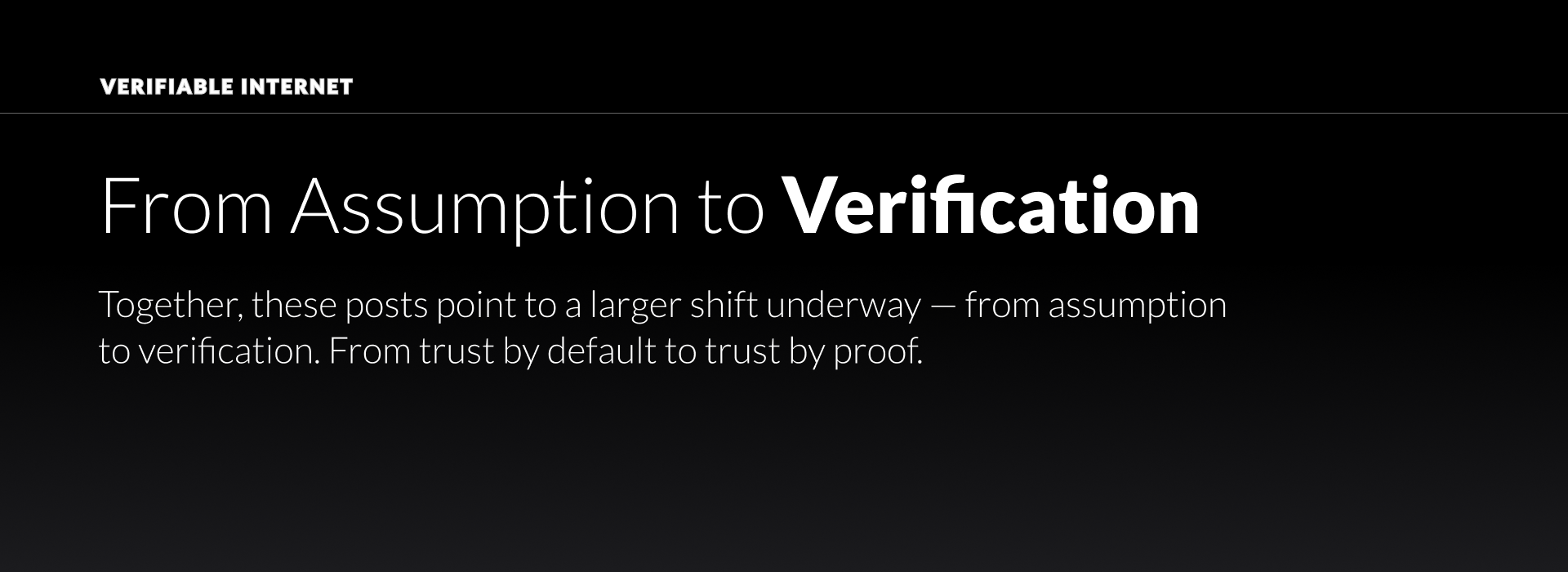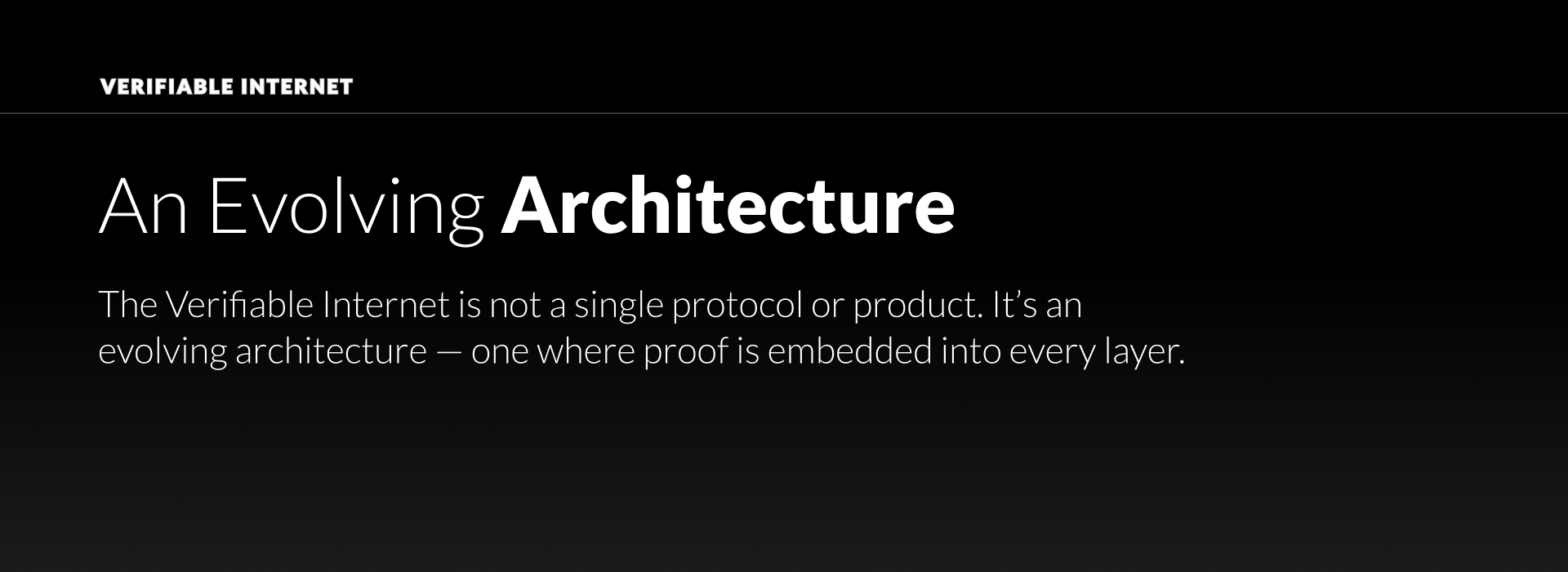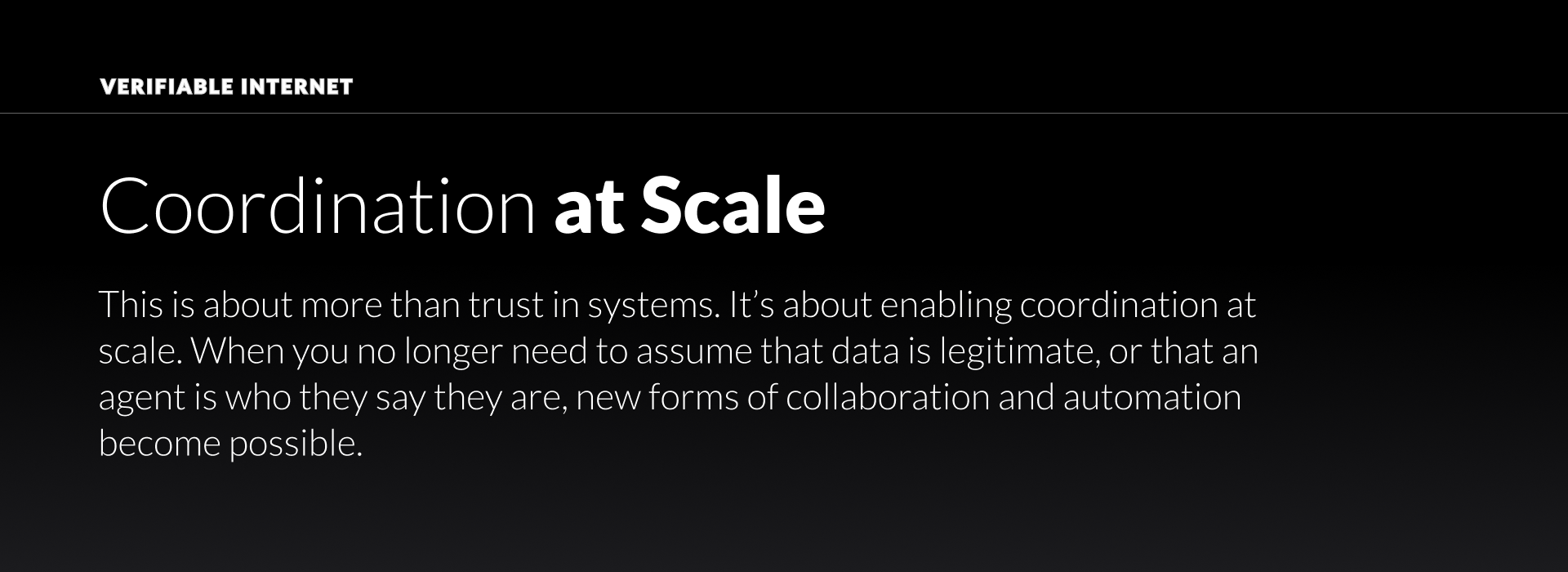Community Report: Closing the Year that Made Nexus Real
2025 was transformational for Nexus. This is our LAST community report of the year! The past year, Nexus has turned

We’ve spent the last three decades building a global digital system without a native way to verify anything.
Content is copyable. Identity is spoofable. AI is unaccountable. Even computation — the thing we rely on to automate decisions and enforce contracts — runs invisibly, with no way to prove what happened.
And yet, we trust it all. Or at least, we used to.
As part of our Verifiable World series, we explored how traditional signals of trust are changing:
Together, these posts point to a larger shift underway — from assumption to verification.

The Verifiable Internet is not a single protocol or product. It’s an evolving architecture — one where proof is embedded into every layer.
Instead of relying on centralized platforms or reputational signals to mediate trust, verifiability gives us the tools to confirm facts independently. It allows systems, people, and machines to interact based on what can be proven, not just what is claimed.
There are three core principles that define this new paradigm:

At Nexus, we exist to build the infrastructure that makes the Verifiable Internet possible — not in theory, but in practice.
Our core technologies are designed to embed proof into every digital action:
What we’re building isn’t just faster infrastructure. It’s trust infrastructure.
By making it possible to verify the origin, behavior, and integrity of anything — code, data, content, or identity — we unlock a new category of digital interaction.
This shift isn’t just about security or compliance. It’s about building systems that people — and machines — can rely on.
In a Verifiable Internet:
This is about more than trust in systems. It’s about enabling coordination at scale. When you no longer need to assume that data is legitimate, or that an agent is who they say they are, new forms of collaboration and automation become possible.

We’re just getting started.
The Verifiable Internet isn’t a destination — it’s an ongoing transformation. Every week, more builders are integrating content credentials, deploying provable models, issuing verifiable credentials, and publishing zk-backed computation.
But infrastructure alone isn’t enough. What we need now is shared vision — across protocols, platforms, and public institutions — for how verifiability becomes the new baseline.
At Nexus, that’s the mission. To bring verifiability from the edges of research into the core of how the Internet works. To replace guesswork with guarantees. And to help build the systems we’ll need — not just to survive the age of AI and automation, but to thrive in it.